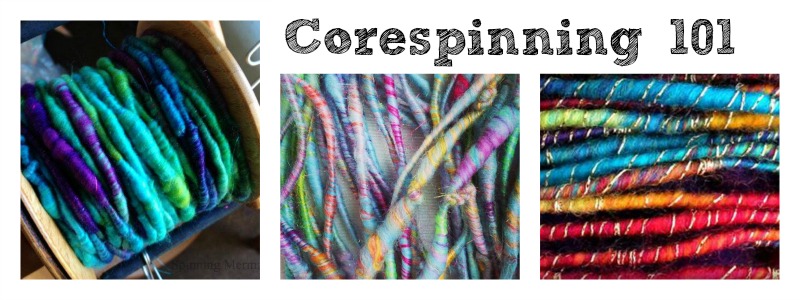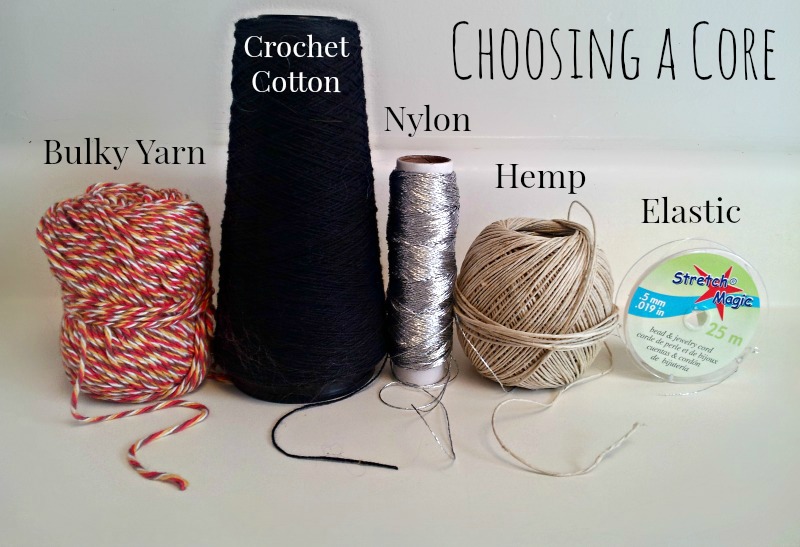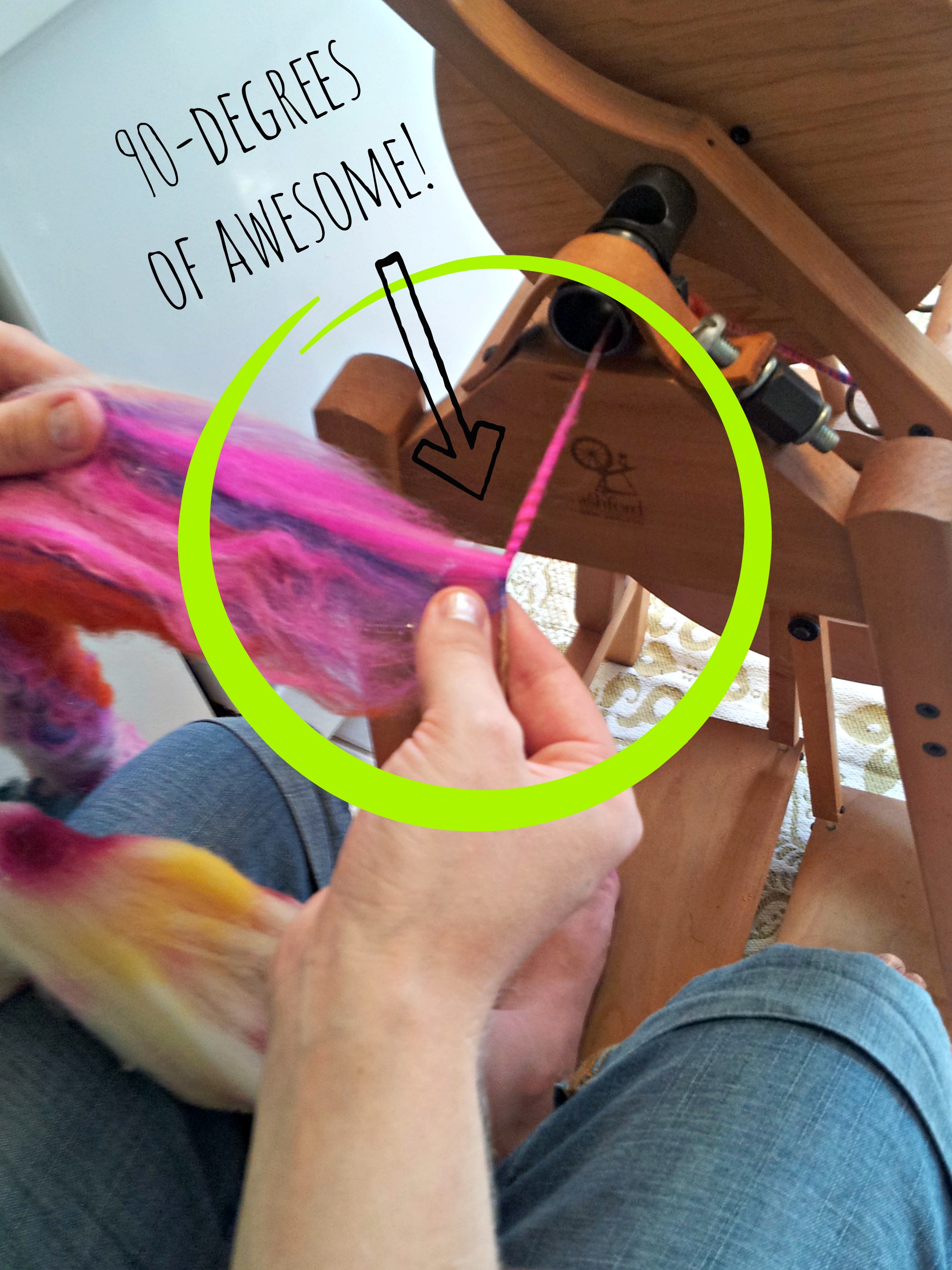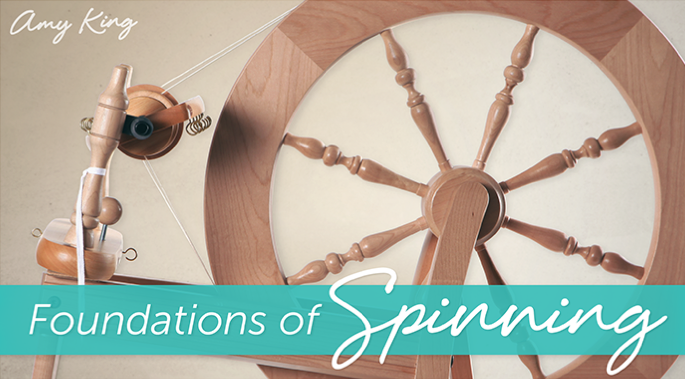The core you use determines the inner personality of the yarn you spin. You can use many unique types of cores: elastic thread for a stretchy yarn, craft wire for a sculptural yarn, cotton crochet thread for an unbreakable yarn, novelty yarns, and just plain ugly yarns. It’s the perfect way to get rid of ugly yarns in your stash, because the core remains hidden under the fiber. Read on to discover more tips for core spinning yarn!

Corespun Yarns by Karla Muntane of Spinning Mermaid Fibers
Choosing a core
If you want your yarn to not drape or feel different than your traditional handspun, try spinning on a sport or light weight 3-ply wool yarn that doesn’t break easily when you pull on it. Many spinners choose core threads that have the same fiber content as the outside fiber (wool batt + wool core) to give the yarn that same drapey woolen feel as a traditional handspun. Some spinners spin all their yarns on commercial mohair cores, because it’s lightweight and very strong. But do experiment with different cores and find one that you love working with!

What if the core breaks?
Sometimes when you’re learning to core spin, your core may break from over-twisting.
If this happens, first, adjust your wheel to have a low-whorl and high uptake so that your yarn gets pulled onto the bobbin quickly without getting a lot of twist built up into the core. Once you have adjusted your wheel, tie the core thread in a knot and spin over it at a 90-degree angle.
If your core breaks again, it’s possible the core you chose is too weak to support a core-spun yarn. You can fix this by tying a knot with a different (stronger) thread and continue core spinning. Or you can take very strong nylon beading thread and hold it with your core to improve the strength of the core.
The best way to avoid this problem in the first place is to make sure your wheel is setup for core spinning (low whorl, high uptake) and that your core is strong enough by pulling on it hard to test the breaking strength before spinning.

Choosing fiber for core spinning
I find it easiest to teach beginners to core spin using a carded batt of fiber. The fibers are carded to be mostly in the same direction, with enough texture and random alignment that the fibers grab onto the thread without making air pockets.
Another fiber preparation that is easy for beginners to core spin is pulled top. Once you master core spinning batts, try core spinning locks that you have hand-picked with your fingers by pulling them apart and turning them into a cloud.
The most difficult fiber I have found for core spinning is commercial bouncy fluffy top. All the fibers are in the same direction, which can work against the core. I find that core spinning directly from commercial top creates air pockets around the core and lumps and bumps that can fall off the core. If combed top is the only fiber you have available for core spinning, strip it into sections and tear it apart into shorter lengths, turning it into a fluffy cloud and randomizing the direction of the fiber.

Spinning at the right angle
The No. 1 rule when core spinning is to hold the fibers at a 90-degree angle to the core. Getting this alignment takes practice, as it is a brand new way of holding the fiber compared to traditional spinning. I use my right hand to hold the core thread under tension (I press the core thread into my palm using my pinky finger) while drafting and aligning the fibers with my left hand and thumb/pointer finger of my right hand.
New Craftsy spinning class!
 Learn how to spin the stunning yarn you’ve always dreamed off with the new Craftsy class Foundations of Spinning. Sign up today to enjoy expert instruction from renowned fiber artist Amy King, crystal clear HD video lessons and unlimited lifetime access to your online spinning class.
Learn how to spin the stunning yarn you’ve always dreamed off with the new Craftsy class Foundations of Spinning. Sign up today to enjoy expert instruction from renowned fiber artist Amy King, crystal clear HD video lessons and unlimited lifetime access to your online spinning class.

Share tips, start a discussion or ask one of our experts or other students a question.
No Responses to “Tips for Core Spinning Yarn”